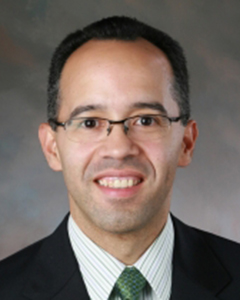CDC Low Treatment Rates for African Americans with HIV
Though the rate of HIV diagnoses has declined in the last decade, a recent Centers for Disease Control and Prevention (CDC) report finds that some patients with HIV are less likely to get ongoing or routine medical care.
From 2011 to 2013, the CDC found that only 38 percent of African-Americans with HIV received ongoing care. They also were less likely than any other group to get routine treatment. Within the group, treatment rates also differed according to sex. Forty-four percent of black women received consistent treatment, while only 35 percent of black men did.
Nearly 1.2 million Americans (and 37 million people worldwide) live with HIV. About 40,000 new diagnoses occur each year in the U.S. However, HIV rates among Americans decreased 19 percent from 2005 to 2014, so the disparity in treatment for certain groups is troubling and likely indicates a larger public health problem with access to care and patient education.
The CDC says it has worked for several years to address these disparities, but that it is increasingly focused on prevention strategies, early diagnosis when people do become infected and efforts to ensure these patients are quickly connected to care that can help them maintain good long-term health.
“Consistent care matters. It enables people with HIV to live longer, healthier lives, and it prevents new infections,” said Jonathan Mermin, M.D., director of CDC’s National Center for HIV/AIDS, Viral Hepatitis, STD, and TB Prevention. “And closing this gap in care will be essential if we are to see the narrowing racial divide in HIV diagnoses close completely.”
I couldn’t agree with Dr. Mermin more. Across the medical community, from hospitals to community health clinics and national organizations like the CDC, we need to focus on increasing access to care and expanding services to high-risk groups. Prevention also is critical, and that starts with providing more health education programs in communities where there’s a huge disparity in HIV diagnoses and treatment. Lack of awareness of HIV status can increase HIV rates in the community. If a person doesn’t recognize the signs and symptoms ( or is hesitant to seek medical care) they may unknowingly infect their sexual partner (s). The later a patient is diagnosed, the more difficult it is to control the disease and provide effective medical care that will improve that person’s quality of life and prevent the transmission of the disease.
This is only part of the battle. We also need to get rid of the stigma that surrounds HIV, as more people live with the disease today than ever before. Even with their diagnosis, they are able to live healthy and productive lives. Take the time to learn more about HIV prevention and testing options if you are unsure of your status. If you’ve been recently diagnosed, the CDC offers several resources to connect you with treatment and information about living healthy with the disease.
I completely understand the fear and stigma that prevents many people from getting tested or seeking treatment, but this is a prime example of how lack of awareness can jeopardize public health. There are so many qualified and compassionate health providers in communities across the country, and HIV is no longer the immediate death sentence it once was when the disease first emerged more than 30 years ago. So many people are living — and thriving — even in the midst of a diagnosis. If you are concerned about your status or that of a loved one, the best thing you can do is schedule an appointment and get tested. Whatever the outcome, having this knowledge is better than not.






